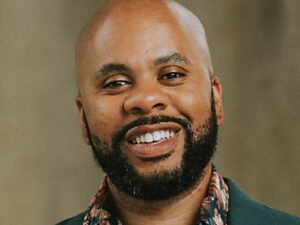
Local Breaking Police News

9 hours ago
Dangerous Mass. wind chills plunge to -15 degrees in coldest day of season
Residents across Massachusetts woke up Monday to what forecasters are calling the coldest day of the season so far, with wind chills between zero and 15 below zero statewide.A cold weather advisory was in effect for the Berkshires until 9 a.m. on Monday, where wind chill temperatures were -15 degrees. National Weather Service forecasters warn conditions could cause hypothermia or frostbite. It was 5 degrees in Pittsfield before sunrise, 9 in Worcester and 13, 14 and 15 degrees in Springfield, Boston and Hyannis, respectively. All areas, except for Cape Cod & the Islands, were at zero or subzero wind chill levels. Forecasters advise limiting outdoor activity on Monday and wear appropriate winter clothing, including hats and gloves. Any lingering snow showers are expected to taper off by mid-morning as sunshine takes over the day. However, temperatures will struggle to rise past the 20s across the state, forecasters warn. Highs in Springfield during the daytime will reach around 26 with -3 wind chills, while it could only get up to 24 degrees in Worcester with a -10 wind chill. Boston may reach 26 degrees that feel like -5. Wind gusts between 25 and 35 mph are expected to pick up throughout the day, especially for those in higher elevations, forecasters said. This will keep wind chill temperatures in the upper single digits and lower teens in the afternoon. There’s also a slight chance for snow showers in the Berkshires on Monday night, though forecasters say possibilities are low.Forecasters are eyeing rising temperatures on Wednesday, with highs reaching the 40s and near 50s across the state. This could come just before a strong storm system Thursday into Friday, forecasters warn, where heavy rain and high winds as temperatures climb further into the 50s and potentially 60s.
9 hours ago
Brown University shooting suspect released; gunman still at large
The person of interest taken into custody in connection with a fatal mass shooting at Brown University on Saturday was released by the Providence Police Department. The suspect had been merely identified by police as a man in his 30s. The person of interest was taken into custody at a hotel in Coventry, Rhode Island, early Sunday morning.However, by Monday morning, police confirmed he had been released. The search continues for the gunman who killed two students and injured nine others.The Providence Police Department asks that any and all video or photo evidence be submitted via phone at 401-272-3121 or to the FBI tip line.Read more: Video of Brown University shooting suspect released after 2 dead, 9 injured“Tonight, we announced that the person of interest is being released,” a statement from the Providence Police Department posted at 12:01 a.m. on Dec. 15 on X read. “The investigation has been ongoing and remains fully active between all agencies. Since the first call to 911, we have not received any specific threats to our community,” the statement read. The shooting broke out around 4 p.m. on Saturday, inside the first floor of the Barus and Holley engineering and physics building. Officials said the gunman left the building on the Hope Street side. A massive law enforcement response flooded Rhode Island after the shooting as the school and surrounding community went into a lockdown that lasted over 12 hours. A manhunt then ensued, with investigators combing the campus and nearby neighborhoods. The department announced a person of interest was in custody early Sunday morning, but did not provide further details. There were no other people the department was seeking in connection with the crime at the time, Police Chief Col. Oscar Perez said. The campus shelter-in-place order was lifted around 5:45 a.m. Sunday, under two hours before the department announced the person of interest was in custody. As of Sunday, seven people were in stable condition, one was in critical but stable condition and one person was discharged from the hospital after the shooting, Mayor Brett Smiley said. Brown University president Christina Paxson said on Sunday morning that, while officials regularly prepare for this type of incident, “When it happens, it’s just hard to believe.” “It’s devastating,” Paxson said.
10 hours ago
Mass. man nicknamed ‘Johnny Jackpot’ wins $100,000 jackpot prize
A Massachusetts man who goes by the nickname “Johnny Jackpot” won a jackpot prize of $100,00. On Dec. 4, Blackstone resident Mark “Johnny Jackpot” Wisniewski was playing on an “IGT Triple Double Bonus Poker” machine in Mohegan Sun’s Casino of the Sky. He spun quad Aces and won $100,000.On the same day, a Connecticut resident was playing on a “Spanish 21″ table in Mohegan Sun’s Casino of the Sky when they hit the Triple Diamond progressive jackpot. The jackpot prize was worth $940,658. The win came after the guest was dealt a “21,” which earned them a spin on the wheel thanks to the $5 side bet.Overall, there are about 4,000 slot machines and more than 300 table games at the Connecticut casino. There are two areas, Casino of the Sky and Casino of the Earth, that offer slot machines.Players must be 21 years or older.In July, a New Hampshire couple walked away with a six-figure jackpot prize after betting $20 at Mohegan Sun.The couple, identified as Samantha L. and Thomas S., were playing the slot machine game “Huff N’ Even More Puff” by Light & Wonder in Mohegan Sun‘s Casino of the Sky when they won the jackpot. The prize was worth $131,186.64.And about a week before, one of the largest jackpots ever won at Mohegan Sun was hit.While playing on a “Spanish 21″ table in Casino of the Earth on July 9, the player made an optional $5 Bonus Spin Xtreme side bet. The bet ended in Triple Diamonds, which landed them the $2,018,742.30 jackpot.“Not only is this the biggest jackpot win at Mohegan Sun in 2025, but it also ranks among the top five largest table game payouts ever at Mohegan Sun,” a press release from the casino stated.Earlier this year, Mohegan Sun became the best place in the country to play slots, according to USA Today.Experts narrowed down the list from over 1,000 casinos across the country to the top 20. In the list, Mohegan Sun was included.Then the public had a chance to vote on their favorite.“These 20 casinos, nominated by a panel of experts, stand out for their exceptional slot offerings. From classic reels and video slots to cutting-edge machines with progressive jackpots, these casinos’ expansive selections are sure to keep the excitement going. High payout rates, enticing bonuses like free spins, and vibrant, comfortable slots floors make each of these casinos a must-visit for anyone who loves to play,” USA Today wrote.Mohegan Sun also placed second for best casino hotel and second for best casino outside Las Vegas.For those who need help with responsible gaming, call the helpline at 1-800-327-5050 or go to GameSenseMA.com or ccpg.org.If you purchase a product or register for an account through a link on our site, we may receive compensation. By using this site, you consent to our User Agreement and agree that your clicks, interactions, and personal information may be collected, recorded, and/or stored by us and social media and other third-party partners in accordance with our Privacy Policy.
10 hours ago
Jacob’s Ladder Business Association elects new officers
HUNTINGTON — The Jacobs Ladder Business Association elected new officers at its annual Snack and Schmooze event on Nov. 13 in Stanton Hall.Elected as president and clerk was Laurie Martell, assistant vice president and branch manager of Westfield Bank in Huntington. In an introductory letter to area businesses, Martell said she has been in the banking industry for over 25 years and enjoys helping customers and business owners with all their banking needs. Returning to the JLBA board as vice president is Michele Kenney, the program director for the Southern Hilltowns Adult Education Center, a UMass off-campus program in Chester, as well as owner of Custom Thermal Shades in Blandford. Kenney previously served on the JLBA board for many years in a number of capacities, including as former JLBA president.Liz Massa will continue in her role as JLBA treasurer, a role she has filled for several years. Massa is well known locally as the founder of Western Mass Hilltown Hikers and serves on boards in the town of Chester.New to the JLBA board is Stephanie Stoudenmire, a Huntington resident and owner of Codeforce Digital Consulting. Stoudemire will serve JLBA as its social media and marketing director. In her work as a digital consultant, Stoudenmire assists several local businesses, including Clockworks and Drennan Tax Service. She also teaches computer classes throughout the state and locally for SHAEC.Gateway Regional Superintendent Melissa Matarazzo speaks with JLBA treasurer Elizabeth Massa at a recent Jacob's Ladder Business Association meeting in Huntington. (AMY PORTER / THE WESTFIELD NEWS)The Westfield NewsThe Jacobs Ladder Business Association has acted as the Hilltowns Chamber of Commerce since 1991. JLBA’s mission is to help Hilltown Businesses thrive by supporting established and emerging entrepreneurs through networking, education, events and collaborative marketing throughout Western Massachusetts.Western Massachusetts small businesses and organizations are invited to join the JLBA. Annual membership is $95 and gets each member on the Business Associations Hilltown Destinations Map, which showcases hilltown businesses along with hiking trailheads and water recreation. For more information, visit JLBA.org or email JacobsladderBA@gmail.comThe first JLBA gathering in the New Year will be at 6 p.m. Thursday, January 8, 2026, in The Southern Hilltowns Adult Education Center (SHAEC) office on 26 Main St. in Chester. “My vision for JLBA would be for businesses to really connect with each other and the community with more in-person networking events. We have a lot of knowledge to share, and it’s important we know what services are available from our fellow Hilltown business partners,” said Martell, adding, “We’re here to help you succeed.”
10 hours ago
All-WMass Girls Soccer: 2025 selections for all four classes
High School SportsPublished:
10 hours ago
As hunger spikes, study urges more schools to implement Breakfast in the Classroom initiative
The Eos Foundation recently released its study, Ending Hunger in Our Classrooms with Breakfast in the Classroom, which explores the state of breakfast at Massachusetts’ high-poverty schools and urges schools to implement the Breakfast in the Classroom program.The Eos Foundation is a private family trust which focuses on combating hunger, poverty, gender and racial equality.Since 2013, the Eos Foundation has provided grants to schools to launch After the Bell Breakfast programs, focusing primarily on Breakfast in the Classroom.The report highlights how Massachusetts schools could feed 303,000 more students breakfast each day with universal free school meals and bring in an extra $73 million in federal dollars. The comprehensive statewide analysis revealed an opportunity for Massachusetts to end hunger in K-12 public schools by instituting Breakfast in the Classroom. The Eos Foundation calls for this urgent expansion as hunger continues to spike across the state. The reports finds that while 595,000 Massachusetts students participate in school lunch each day, only 292,000 eat breakfast, leaving a “breakfast gap” of 303,000 students. In 2023, Massachusetts passed legislation, School Meals for All, guaranteeing free school meals for all K –12 students. This presents an opportunity to reduce childhood hunger, according to Eos Foundation President Andrea Silbert.Silbert said the organization is trying to help schools in the state follow the example of Springfield. For the last 10 years, Springfield Public Schools has incorporated Breakfast in the classroom districtwide, including in high schools. Breakfast participation soared from 44% in 2015 to 84% in 2025. With the highest breakfast participation in the state, Springfield uses increased federal reimbursements to fund its 62,000 square-foot Culinary Center. The center serves over 19,000 breakfasts each day, more than any other district, and over 60% of meals are scratch cooked.Another aspect of the Breakfast in the Classroom initiative that Silbert finds important is the schools’ collaboration with local farms and businesses.For example, Springfield Public Schools purchases 25% of its food from local food companies and farms. “A lot of them are in Western Massachusetts. It’s bigger than just feeding kids, it’s about buying fresh, local food and supporting local companies,” Silbert stated. Massachusetts Secretary of Education Dr. Patrick Tutwiler talked about the example Springfield Public Schools are setting, stating, “It was wonderful to be in Springfield to see the impact of Breakfast in the Classroom firsthand. Springfield is a model for meeting children where they are, sustaining high breakfast participation, and incorporating local products with meals made from scratch. Every child I met with that day was happy, engaged and enjoyed their meal. We will continue to work to ensure every student across Massachusetts has an opportunity to begin their days nourished and ready to learn.”Looking at other Massachusetts school districts, Chicopee breakfast participation decreased from 77% to 57.3% over the last year, ranking 16th statewide among high-poverty schools. Hitting the 80% benchmark would mean feeding 2,066 additional students every day and bringing in $1.05 million more in USDA reimbursement revenue. Silbert explained that those federal dollars, currently left on the table, could be reinvested directly into student support. Based on the report, high poverty schools are leaving $73 million in federal funds on the table. If every high-poverty school reached 80% breakfast participation, a threshold many met in prior years, the state would draw down an estimated $73 million more annually in federal USDA reimbursements. At a time when districts face soaring food and labor costs, this revenue is currently “forfeited” by low participation, the report notes, Silbert explained. The report highlights Breakfast in the Classroom as the most effective strategy to close the breakfast gap. When served in the cafeteria before the bell, only 36% of students eat breakfast; served in the classroom after the bell, participation jumps to 71%.To accelerate progress, Eos is offering up to $20,000 per school to transition from cafeteria breakfast to Breakfast in the Classroom.The report also lays out steps for superintendents, principals, teachers and legislators to help their specific district implement a plan to ulitlize the program. To view each school’s performance or see the full report, readers can visit eosfoundation.org.
10 hours ago
Westfield Education to Business Alliance to meet Dec. 16 at Tiger’s Pride
WESTFIELD — Superintendent Stefan Czaporowski said this year’s monthly Westfield Education to Business Alliance meetings will focus on different themes and ways that area businesses and organizations can interact in a meaningful way with the schools.WE2BA is a dynamic partnership between Westfield Public Schools and the Greater Westfield Chamber of Commerce that creates opportunities that support students, empower educators and strengthen Westfield’s business community. One of the topics at the WE2BA meeting on Tuesday, Dec. 16, from 8-9 a.m. in Tiger’s Pride at the Westfield Technical Academy, 33 Smith Ave., will be on how businesses or individuals may “adopt” a classroom. Superintendent Stefan Czaporowski said in the Adopt-a-Classroom program, businesses or individuals in different professions get involved by sharing their expertise or learning with a classroom of students. “It’s not necessarily financial, we’re looking for your time and talent,” he said.For example, the science department at Westfield State University has worked with elementary and middle school students on a real-world study of erosion, with hikes to the Westfield River. Mestek professionals have worked with high school students entering the science fair on how to hone in on presentation skills to get a point across, and the Chamber of Commerce has worked with them on how to build resumes and on interview skills.Otis Ridge has had an ongoing program with students at Highland Elementary on how to run a business that includes a field trip and tour of the ski area, and some fun in the snow.Professionals who participate in Adopt-a-Classroom do not have to have experience in the classroom, as they will be guided in their lesson plans by one of the content supervisors at Westfield Public Schools: Mary Keane, English Language Arts; Kate Perez, Mathematics; Christina Smith, science and technology; and Lindsey Ayers, K-4 STEM coach. “We want to encourage any business or someone who works for a business to be involved. Adopt-a-Classroom helps to provide authentic, real-world learning experiences for our students, and our partnerships with businesses help to accomplish that,” Czaporowski said.Other topics at the meeting on Dec. 16 will be on how to participate as a judge in the upcoming high school science fair and on the Westfield High School student web-design program.At the next WE2BA meeting on Jan. 18, 8-9 a.m. at Tiger’s Pride, the focus will be on student internships, job shadowing and cooperative education.
10 hours ago
Asking Eric: Should I keep reaching out in a one-side friendship?
Dear Eric: I’ve been friends with “Mikey” since we were about 9 years old. We are now 61. We grew up in the same neighborhood as kids, have moved around but still live in the same small town.Over the years I’ve noticed the only time I’d see Mikey was when I’d drive to his house or see him at local flea markets. I’ve asked him to have lunch, go fishing or hang out with me and it was always some excuse as to why he couldn’t make it.I purposely stepped back from going to see him and it was over a year before he reached out via text to ask why he hadn’t seen me. So, I replied via text and stated the above and that I was hoping for more from what I viewed as a one-sided friendship. I also stated how difficult this was to write, that I thought about him often, loved him and that he’d always be my friend.It’s been over a week and I’ve received no reply. I don’t know what to make of this. Any insight is appreciated.— Missing my friendDear Missing my friend: Good for you for asking for what you need. So often, in friendships and other relationships, we fear that talking about what isn’t working or making respectful asks for change will repel people, when in reality it makes space for a closer bond.I know it doesn’t seem like it in the case of your friendship with Mikey. But by pointing out that something isn’t working for you, you’ve made fixing it easier. Mikey has to participate, too, though.It’s possible that he saw your friendship differently. Maybe he’s more of a homebody and declined invitations to hang out because of social discomfort. And maybe he’d grown comfortable with the pattern of you reaching out and feels surprised at your response. It’s not for me to say, and the feelings are his responsibility to negotiate. One of the benefits of friendship, of course, is that he could share them with you and you could talk it out.If you miss him and you want to keep the connection going, you may have to continue taking on more responsibility in the friendship. Try reaching out by phone; ask if he’ll let you come over. Start the conversation from a neutral, open place— you value your friendship and you want to feel valued. Hearing it rather than reading it may help the message come across more clearly. Then you and Mikey can start again.(Send questions to R. Eric Thomas at eric@askingeric.com or P.O. Box 22474, Philadelphia, PA 19110. Follow him on Instagram and sign up for his weekly newsletter at rericthomas.com.)©2024 Tribune Content Agency, LLC.
MORE ARTICLES BELOW ...

December 15, 2025
The National Police Association Endorses the Judicial Accountability for Irresponsible Leniency (JAIL) Act
INDIANAPOLIS, Dec. 12, 2025 — Judges who unleash violent criminal offenders onto our streets have helped foster a public safety crisis that defies logic. Irresponsible judicial decisions destroy innocent lives and communities, while they consume considerable police resources. This practice is also a disgrace to crime victims and their loved ones, who must watch powerlessly as the courts fail to dispense appropriate justice. A legislative bill called the Judicial Accountability for Irresponsible Leniency (JAIL) Act (S. 3239 / H.R. 5312) will hold judges who release repeat violent offenders pending trial accountable. This bill, endorsed by the National Police Association (NPA), was introduced in the U.S. Senate by Sens. Tim Sheehy (MT) and Marsha Blackburn (TN); and in the House by Reps. Randy Fine (FL-06), Anna Paulina Luna (FL-13), and Doug LaMalfa (CA-01). Specifically, if a state or federal judge releases a defendant pending trial who has been convicted of a violent crime and has a history of violent convictions, the JAIL Act allows the crime victim -or an immediate family member if the victim is deceased- to pursue civil damages against that judge. While the bill is focused on judges, victims will also be permitted to pursue civil action against other involved government entities, including prosecutors. “Judges have a legal and ethical obligation to mete out justice that serves the public, not their own personal convictions. Allowing violent criminals to prey on the innocent is antithetical to our nation’s foundational values, and unfortunately, this practice has been occurring with increasing frequency. In the best interest of crime victims and overall public safety, this irresponsible behavior needs to be addressed via legal avenues,” said Paula Fitzsimmons, Legislative Director, National Police Association. “The JAIL Act will bring much-needed change by holding those judges who subvert our criminal justice system by releasing repeat violent offenders onto our streets, legally responsible. Perhaps these judges will more carefully ponder whether their judicial decisions have the potential to upend lives,” Fitzsimmons added. The NPA extends its gratitude to the bill’s sponsors for recognizing that the government’s primary obligation is to keep its citizens safe. To support anti-crime, pro-police legislation, join the NPA’s Call to Action team. Receive email alerts on bills, including which lawmakers to contact. About: The National Police Association (NPA) is a nonprofit organization dedicated to supporting law enforcement through advocacy, education, and the courts. For more information, visit NationalPolice.org. ###
December 5, 2025
The National Police Association Endorses the Strengthening Resources for Our Schools (SROs) Act
INDIANAPOLIS, Dec. 5, 2025 — School resource officers (SROs) can be the most effective safeguard against the violence plaguing our nation’s schools. They can provide rapid response in active shooter situations, communicate crucial intelligence to other responding officers, and build rapport with their students. Police agencies struggling with staffing may not have the resources necessary to hire SROs; however, this leaves schools with fewer options. Recruiting retired military veterans and police officers is an effective way to fill this void. These professional men and women already possess the necessary skills and temperament, as well as a strong desire to protect and serve. What they need is an incentive to re-enter the workforce. A legislative bill called the Strengthening Resources for Our Schools Act (S. 3189 / H.R. 6120) accomplishes this by granting federal income tax exemptions on retirement pay for retired law enforcement officers and military veterans who return to work as SROs. The Strengthening Resources for Our Schools Act (SROs), also referred to as the SROs Act, was introduced in the Senate by Sens. Tim Sheehy (MT), Cynthia Lummis (WY), and James Justice (WV); and in the House by Reps. Ryan Zinke (MT-01), Donald Davis (NC-01), and Brian Fitzpatrick (PA-01). This bill, endorsed by the National Police Association (NPA), has been referred to the House Ways and Means Committee and the Senate Finance Committee. The text for the Senate bill is here; the text for the House side bill is here. “Who better to protect our nation’s young people than retired police officers and military veterans. These dedicated public servants have the experience, skills, training, and temperament required to do the job, and many of them continue to seek ways to serve their communities, even after retirement,” said Paula Fitzsimmons, Legislative Director, National Police Association. “The SROs Act will provide retired police officers and military veterans with an incentive to continue doing the lifesaving work they’re so passionate about, while providing schools with a lasting security measure. It will also benefit police agencies that may not have adequate resources to employ dedicated SROs,” Fitzsimmons added. To support anti-crime, pro-police legislation, join the NPA’s Call to Action team. Receive email alerts on bills, including which lawmakers to contact. About: The National Police Association (NPA) is a nonprofit organization dedicated to supporting law enforcement through advocacy, education, and the courts. For more information, visit NationalPolice.org. ###
December 4, 2025
The National Police Association Urges U.S. Supreme Court to Support LAPD Officer Toni McBride and Reject the War on Cops
INDIANAPOLIS, Dec. 4, 2025 — The National Police Association (NPA) today announced the filing of an amicus curiae brief with the U.S. Supreme Court in support of Los Angeles Police Department Officer Toni McBride, framing her case as a pivotal stand for America’s embattled law enforcement. The brief, submitted in City of Los Angeles v. Estate of Daniel Hernandez (No. 25-538), urges the High Court to overturn a controversial Ninth Circuit decision and reaffirm that split-second police decisions made in the line of duty must not be paralyzed by courtroom second-guessing. Officer McBride’s saga began with a chaotic April 2020 incident in South Los Angeles. A suspect high on methamphetamine caused multiple vehicle crashes and then emerged wielding a knife, advancing on McBride and ignoring her repeated commands to drop the weapon. With bystanders at risk, McBride fired to stop the threat. It took six shots over six seconds to finally subdue the knife-wielding assailant, who still clutched his weapon until the end. A Los Angeles County investigation deemed the shooting justified, as did a Federal District Court judge and the Ninth Circuit panel, but in a sharply divided 6-5 vote, en banc review by the Ninth Circuit Court of Appeals upended that outcome, insisting a jury should second-guess her from the safety of a courthouse. This judicial whiplash set the stage for a Supreme Court battle to restore the legal shield for officers facing life-threatening attacks. In its amicus brief, the NPA excoriates the Ninth Circuit’s approach as a betrayal of Supreme Court precedent and common sense. The Ninth Circuit majority effectively “repudiated the ‘reasonable officer’ construct required by this Court,” positing an “utterly unrealistic, quasi-judicial process of threat assessment as each shot is fired”, stated attorney for the NPA, James Buchal. By demanding that McBride pause to reassess in the middle of a deadly confrontation, the Ninth Circuit invited exactly the kind of judicial second-guessing the Supreme Court has warned against. “Police officers cannot effectively maintain control of violent offenders on the Nation’s streets, and prevent further injury to the public if their only option is to retreat,” Buchal continued, noting that stripping officers of decisive authority would create an unreasonable risk to the lives of police officers and the public. The NPA’s brief places heavy emphasis on the physiological and tactical realities of lethal force encounters, realities the appellate judges, in the NPA’s view, dangerously ignored. When an armed suspect is charging or even after he falls wounded, he can still pose a mortal threat in the blink of an eye. Research cited in the brief confirms that a person shot multiple times can continue moving and fighting for crucial seconds (indeed, McBride’s assailant was still armed and struggling on the ground). When facing a crazed, knife-wielding attacker, even a moment’s hesitation can be fatal. The NPA’s brief vividly drives this point home, describing how an officer in McBride’s position experiences a flood of adrenaline and tunnel vision, with mere milliseconds to decide life or death. In such a scenario, McBride’s actions were not only reasonable but heroic. The National Police Association is represented by James L. Buchal, of Murphy & Buchal LLP, in Portland, OR. The full brief is available on the Supreme Court docket under case number 25-538 and can be read here. The National Police Association (NPA) is a nonprofit organization supporting law enforcement through advocacy, education, and the courts. For more information, visit NationalPolice.org. ###
November 6, 2025
The National Police Association Supports the “Larry Henderson Act” in Written Testimony to Ohio House Judiciary Committee
INDIANAPOLIS, Nov. 6, 2025 / — The National Police Association (NPA) has submitted written testimony to the Ohio House Judiciary Committee in support of the Larry Henderson Act (H.B. 372), a vital measure sponsored by Representatives Cindy Abrams (29) and Phil Plummer (39) that ensures convicted killers of police officers and other first responders face the maximum, unmitigated penalty under Ohio law. The testimony can be read here. In the testimony presented by NPA Legislative Director Paula Fitzsimmons, the NPA called on lawmakers to end the re-traumatization of families of fallen officers by closing the parole loophole for those convicted of the aggravated murder of a law enforcement officer. “When a police officer is killed in the line of duty, their families, loved ones, and colleagues experience unimaginable grief,” Fitzsimmons wrote. “This gaping wound gets ripped open when an offender becomes eligible for parole.” Under current Ohio law, the death penalty or a life sentence may be imposed for the intentional killing of an officer, but parole eligibility can still arise in certain circumstances. The Larry Henderson Act eliminates that possibility, requiring courts to impose either the death penalty or life without parole. It also extends those same protections to prosecutors, first responders, and military personnel targeted because of their service. This legislation comes amid a surge in violence against police. According to the FBI, 85,730 officers were targeted in the United States last year alone, the highest number in over a decade. The NPA emphasized that this bill represents a moral and legal commitment to the safety of those who protect the public, ensuring that the justice system delivers certainty and closure for their families. “The Larry Henderson Act ensures that the full force of the law is applied to those who intentionally kill our nation’s protectors,” said Fitzsimmons. “Justice demands nothing less.” The NPA urges Ohio lawmakers to adopt the Larry Henderson Act as a substantive strengthening of public-safety protections in the State. By doing so, Ohio sends a clear message: attacks on those who protect us will be met with the full force of justice. About: The National Police Association (NPA) is a nonprofit organization dedicated to supporting law enforcement through advocacy, education, and the courts. For more information, visit NationalPolice.org. ###
October 31, 2025
The National Police Association Endorses Proposed House Resolution Condemning the Rise in Violent Attacks Against ICE Agents
Indianapolis, IN, October 30, 2025 – The men and women of Immigration and Customs Enforcement (ICE) work tirelessly to remove those accused of murder, trafficking, and terrorism from our streets. Instead of receiving praise and gratitude, agents are subjected to doxing attempts and distortions. Assaults and threats on ICE officers have surged, and bounties have been placed on their lives. In response, Reps. Russell Fry (SC-07), August Pfluger (TX-11), Roger Williams (TX-25), and Pete Sessions (TX-17), introduced resolution (H.Res. 767) in the House of Representatives to disavow the growing wave of violent attacks against ICE agents. It is endorsed by the National Police Association (NPA). The text for the resolution is here. Specifically, this resolution accomplishes the following: Denounces the rise in violent attacks and threats being made against ICE agents and facilities, and expresses regret for those -including detainees- who have been injured or lost their lives as a result; Affirms the essential role that ICE agents have in enforcing immigration laws, securing our nation, and keeping our streets safe; Asks the Department of Homeland Security and other federal, state, and local law enforcement agencies to investigate these attacks, and to create initiatives that protect from harm; “The harassment, assaults, and meritless hostility being leveled at ICE agents working tirelessly to uphold our nation’s immigration laws is shameful and should never be tolerated. The onus is on Congress to firmly reject this reckless behavior,” said Paula Fitzsimmons, Legislative Director, National Police Association. “This proposed House resolution sends an unequivocal message that assaulting an ICE officer is forbidden, and that incendiary language by elected officials and media outlets is inexcusable,” Fitzsimmons added. The NPA extends its gratitude to Reps. Fry, Pfluger, Williams, and Sessions for introducing a House resolution to denounce the rampant violence targeting ICE agents. ICE agents are central to enforcing our nation’s immigration laws, and deserve the firm backing of Congress. We encourage all congressional members to support this important resolution. To support anti-crime, pro-police legislation, join the NPA’s Call to Action team. Receive email alerts on bills, including which lawmakers to contact. About: The National Police Association (NPA) is a nonprofit organization dedicated to supporting law enforcement through advocacy, education, and the courts. For more information, visit NationalPolice.org. ###
October 29, 2025
Why Lawmakers Must Back Life-Saving Police Technology
What if your local community could be safer tomorrow—not years from now—because of breakthroughs happening in police technology today? As our world becomes more complex, so do the challenges faced by law enforcement officers on the frontlines. With rising threats and ever-evolving criminal tactics, it’s clear that standing still isn’t an option. Fortunately, recent innovations are changing the face of public safety, helping police officers do their jobs more safely, efficiently, and effectively. Powerful Tools with Proven Results You’ve likely noticed the growing use of body-worn cameras, advanced communications, AI-driven dispatch systems, and real-time crime monitoring in departments across the country. These aren’t just tech fads—they’re tools proven to increase officer safety, strengthen accountability, and support proactive policing. When officers wear body cameras, both community members and police benefit. Incidents are resolved faster, investigations are clearer, and public trust is easier to maintain. But that’s just the beginning. Departments equipped with automated license plate readers, gunshot detection systems, and modern forensic technologies are able to respond more quickly and close more cases, deterring future offenses and giving criminals far fewer safe havens. Remote monitoring and drone support allow officers to safely assess dangerous situations without unnecessary risk—saving lives in the process. The Real Impact While innovative law enforcement technology empowers officers, it also faces unjust scrutiny and even proposed restrictions in certain areas. Some critics overlook how these tools save lives and protect both citizens and officers from harm. With recent surges in assaults on first responders and the increasing sophistication of criminal organizations, innovation isn’t a luxury—it’s a necessity. Use Your Voice to Support Safer Communities Ensuring officers have the best available technology isn’t just about efficiency—it’s about survival. If implemented responsibly, new tools like body-worn cameras, dash cams, digital evidence lockers, and real-time intelligence platforms will continue to elevate public safety standards nationwide. If you want to see more positive change like this, I encourage you to take action: Let your federal lawmakers know you support responsible investments and legislation enabling departments to adopt life-saving technology. Encourage your friends and neighbors to stand with officers by joining our Call to Action (CTA) team. These actions—and your ongoing advocacy—are critical in ensuring that common-sense technology solutions help protect innocent lives and empower those who put themselves on the line each day.
October 22, 2025
The National Police Association Endorses Ohio Bill to Increase Penalties for Evading Arrest
Indianapolis – October 22, 2025 – Fugitives who construct physical barriers for the purpose of evading law enforcement create unsafe situations for officers, innocent civilians, and themselves. In these unpredictable situations, officers may need to order evacuations or lockdowns, disrupting entire neighborhoods. These situations -which can take hours, and even days, to resolve- also place a burden on police departments that may already be experiencing a scarcity of resources. In Ohio, where law enforcement has seen a sharp rise in these incidents, state Sen. Tom Patton (24) has introduced a bill (S.B. 188) to increase penalties for fugitives who barricade themselves to evade arrest. This bill, endorsed by the National Police Association (NPA), is currently in the state’s Judiciary Committee for deliberation. The text for the bill is here. With this bill, a suspect already under arrest for a felony or violent misdemeanor who sets up a barricade and refuses to comply with police orders would be charged with an additional third-degree felony. If the suspect places a third party at risk of serious physical harm, that charge is elevated to a second-degree felony. If the third party is a minor, it becomes a first-degree felony. Anyone assisting a suspect in these instances could be charged with a fourth-degree felony. “Fugitives who establish barricades to evade arrest are placing lives at risk, disrupting neighborhoods, and depleting valuable police resources. They need to be held to account for so blatantly disregarding the law,” said Paula Fitzsimmons, Legislative Director, National Police Association. “Sen. Patton’s Ohio state bill will penalize these lawbreakers accordingly and give law enforcement the leverage they need to de-escalate potentially threatening situations quickly. The suspect can choose to comply or risk facing additional charges and more time in prison,” Fitzsimmons added. The NPA extends its gratitude to Sen. Patton for introducing a bill that imposes harsher penalties for creating a barricade to evade arrest. At a time when Ohio is experiencing an increase in these incidents, this bill will provide police officers with a tool to end potentially perilous situations safely. We encourage the Ohio legislature to pass this important bill. To support anti-crime, pro-police legislation, join the NPA’s Call to Action team. Receive email alerts on bills, including which lawmakers to contact. About: The National Police Association (NPA) is a nonprofit organization dedicated to supporting law enforcement through advocacy, education, and the courts. For more information, visit NationalPolice.org. ###
October 9, 2025
The National Police Association Endorses the Transit Crime Reporting Act of 2025
INDIANAPOLIS, Oct. 9, 2025 — Millions of Americans rely on subways, buses, and other forms of public transportation to get to their jobs, classes, and appointments. In some cities, these transportation hubs have become magnets for lawlessness and heinous violent crimes. It isn’t just passengers who are at risk, either; assaults on transit workers have surged in recent years. The Transit Crime Reporting Act of 2025 (S. 2814), a bill introduced in the U.S. Senate by Sens. Tim Scott (SC) and Thom Tillis (NC), is designed to strengthen personal safety on federally funded transportation systems. It will accomplish this by improving how crime is tracked and mandating the creation of a task force to develop safety strategies. This bill, endorsed by the National Police Association (NPA), is currently in the Senate Banking Committee for deliberation. The text for the bill is here. This bill mandates the creation of a 13-member, multi-faceted task force, to be chaired by the Federal Transit Administration (FTA) administrator. Its additional 12 members will be representatives for various transit agencies and associations, law enforcement agencies, and transit employees. The task force would propose recommendations for improving safety on our nation’s public transportation systems, then submit a report with their findings to Congress. “Our nation has crossed yet another unacceptable line when people rightfully fear being victimized for doing something as routine as taking a bus or riding the subway,” said Paula Fitzsimmons, Legislative Director, National Police Association. “Provisions contained within the Transit Crime Reporting Act of 2025 will help mitigate the crime and lawlessness that has become rampant on our nation’s transportation systems,” Fitzsimmons added. The NPA extends its gratitude to Sens. Scott and Tillis for introducing the Transit Crime Reporting Act of 2025, a bill designed to improve safety on our nation’s public transit systems. Millions of Americans who use or work in public transportation are depending on our federal government to ensure their safety. This bill provides a solid path toward accomplishing that goal, and we encourage Congress to work toward its passage. To support anti-crime, pro-police legislation, join the NPA’s Call to Action team. Receive email alerts on bills, including which lawmakers to contact. About: The National Police Association (NPA) is a nonprofit organization dedicated to supporting law enforcement through advocacy, education, and the courts. For more information, visit NationalPolice.org. ###
September 23, 2025
The National Police Association Demands Records on Chicago Mayor Johnson’s Sanctuary Policy and Crime
Indianapolis — Sept 23, 2025 — The National Police Association (NPA) today announced the filing of a Freedom of Information Act (FOIA) request with the Office of the Mayor of Chicago. The request seeks detailed records on crimes committed in the city by illegal aliens, including data on arrests, recidivism, victimization, and the costs borne by law enforcement and the public. The purpose of this request is to determine whether Mayor Brandon Johnson’s sanctuary policies have jeopardized public safety, or whether the administration has failed, or refused, to evaluate and track the real-world impact of those policies. The full FOIA request can be read here. This action follows a series of troubling remarks by Mayor Johnson, who has repeatedly disparaged law enforcement since taking office. In September 2025, he claimed that “jails and incarcerations and law enforcement is a sickness that has not led to safer communities” and further stated he was “sick and tired” of police being offered to poor and minority neighborhoods “as if they were of no value.” “These statements are not just misguided—they are dangerous,” said NPA spokesperson Sgt. Betsy Brantner Smith (Ret.). “When the mayor of America’s third-largest city tells residents that policing itself is a ‘sickness,’ it emboldens criminals and signals that they should not be held accountable. Chicagoans deserve to know whether the Mayor’s sanctuary policies are compounding these dangers and contributing to rising crime.” The NPA’s FOIA request specifically seeks: Statistics (2023–present) on crimes committed by individuals without lawful immigration status, including violent and property crimes, drug and weapons offenses, and sexual assaults. Data on pre-trial releases, recidivism, and prior deportations of offenders. Victim impact data, including injuries, fatalities, and economic losses. Law enforcement resource impacts, including 911 response times and overtime costs. Comparative analyses of crime rates in sanctuary vs. non-sanctuary jurisdictions. With Chicago officers already strained by staffing shortages and hostility from their own mayor, the public has a right to know whether sanctuary policies are worsening risks. By compelling disclosure of this information, the NPA seeks to establish whether the Johnson administration possesses data that supports its policies, lacks such evidence altogether, or has deliberately chosen not to examine the facts. About: The National Police Association (NPA) is a nonprofit organization dedicated to supporting law enforcement through advocacy, education, and the courts. For more information, visit NationalPolice.org. ###
September 21, 2025
Chicago Mayor Johnson’s Sanctuary for Criminals: A War on Accountability
Since taking office, Chicago Mayor Brandon Johnson has made a sport of denigrating law enforcement, dismissing police and prisons as a “sickness,” mocking the presence of “badges and guns” in Black and Brown neighborhoods, and insisting Chicago must “stop relying on police” to keep order. These are not slips of the tongue. They are the creed of a radical soft-on-crime philosophy that imperils every honest citizen in the city. When Johnson sneers that the only thing offered to poor communities is “jails and police officers,” he betrays both ignorance and contempt. No serious person believes the cop on the beat is a substitute for jobs, schools, or housing. But the hard truth is this: without police, there are no jobs, schools, or housing worth protecting. Ask the shop owner whose store has been looted three times in a year if a social worker would have stopped the thieves. Ask the family of a murder victim if a housing voucher would have kept the triggerman from firing the gun. Ask the victims of violent crimes committed by illegal aliens if they would have preferred those criminals been removed first by ICE. Worse still was Johnson’s declaration that “law enforcement is a sickness.” Tell that to the family of Officer Ella French, gunned down in 2021 during a traffic stop. Tell it to the thousands of officers who kiss their children goodbye each morning, not knowing if they’ll come home. Smearing their sacrifice signals to the criminal element that the political class sees criminals as people who should never be held accountable. Hence, any anger they have toward law enforcement is justifiable. What Johnson proposes is not balance, it is substitution: replacing handcuffs with therapy sessions, and patrol cars with free needles. This is not justice. It is abdication. Chicago does not suffer from an excess of policing. It suffers from an excess of leniency. Violent offenders are cycled through the revolving door of the courts, only to return to the streets more emboldened than before. The victims of this leniency are the very people Johnson claims to champion: the working poor, the immigrant shopkeepers, the elderly who cannot afford to flee to safer suburbs. They do not ask for fewer police. They ask for safety. Mayor Johnson has cast his lot with the leftists who despise the thin blue line. In doing so, he abandons the ordinary citizen, who understands an eternal truth: civilization survives because men with badges and guns stand against the predators. Strip that away, and what remains is not justice, social or otherwise.
September 18, 2025
The National Police Association Backs Michigan Bill Cracking Down on Drivers Who Flee Police
INDIANAPOLIS, Sept. 18, 2025 — Evading police often results in high-speed, reckless driving that causes destruction, untold suffering, and loss of life. Innocent drivers sharing the road with the evader, unsuspecting pedestrians, police officers, as well as the suspect and the suspect’s passengers, are all placed in harm’s way. Michigan joins other states in the union that have seen a dramatic increase in fleeing from the police. This is happening because offenders know that law enforcement agencies have adopted policies that limit or prohibit chases. A bill introduced by Rep. Rylee Linting (027) in the Michigan House of Representatives (H.B. 4690) would amend Michigan’s criminal code to establish more stringent sentences, including a mandatory minimum prison term, for fleeing from police. This bill is currently in the Michigan legislature’s Justice Committee. The text for the bill is here. The bill also creates four levels of evading the police based on factors such as whether the evasion resulted in a car crash or serious injury, or the suspect has prior convictions. The minimum penalty ranges from 182 days in jail to five years imprisonment. “Instances of fleeing from police are occurring in greater frequency because offenders are taking advantage of no-chase or restricted-chase policies established by local governments. This blatant lawlessness is destroying lives and needs to be met with stricter consequences,” said Paula Fitzsimmons, Legislative Director, National Police Association. “Establishing stricter penalties that incorporate a mandatory minimum prison sentence for evading the police and upending lives is the correct prescription,” Fitzsimmons added. The NPA extends its gratitude to Rep. Linting for introducing a bill in the Michigan legislature to adopt stricter penalties -including a mandatory minimum sentence- for fleeing from police. These acts, which have dangerously trended upward, are destroying lives. This bill provides law enforcement, judges, and district attorneys with another tool to hold to account those who have such low regard for the lives of others and the rule of law. We ask all members of the Michigan legislature to support this bill, and encourage other states to adopt similar legislation. To support this and future anti-crime, pro-police legislation, join our Call to Action (CTA) team and receive email alerts on bills, including which lawmakers to contact. Sign up here. About: The National Police Association (NPA) is a nonprofit organization dedicated to supporting law enforcement through advocacy, education, and the courts. For more information, visit NationalPolice.org. ###
MORE ARTICLES BELOW ...
December 15, 2025 3:32 pm
D.C. Police chief pushed cops to manipulate crime data, House Oversight report alleges
December 15, 2025 1:57 pm
Utah repeals collective bargaining ban impacting public safety unions, first responders
December 14, 2025 11:40 am




















